Yes, It's Poutine Week for the Canadian Grand Prix
Welcome to Grand Prix Gastronomy! This week, I’m cooking Canada's national dish, poutine, with butter tarts for dessert.
This project is pretty simple. As a complement to each race weekend, I’ll be cooking the national dish of that race’s host country and sharing information about the process and that dish’s history along the way in an effort to grow more deeply immersed in the local culture from my own home.
What Is Poutine?
I know it's probably stereotypical to pick poutine as the dish for the Canadian Grand Prix — but you can take it up with Canadians, who selected it ahead of other treats like beaver tails and Timbits to take the top spot. I'm hoping I regain the good graces of my Northern friends by adding in a recipe for one of my favorite Canadian desserts: butter tarts.
Poutine, for the unfortunately uninitiated, is a perplexing combination of foods that honestly shouldn’t go together but are fantastic when you scoop them all up for one bite. Top a bed of french fries with cheese curds and brown gravy, and there it is: poutine, a dish that emerged right form Québec in the 1950s.
If you’ve been to Canada, you know that poutine has become massively customizable; if you want to put it on fries, then you might as well put it on fries. That means pulled pork, chicken strips, tons of veggies — really, whatever your heart desires. I’m opting for the basic, traditional recipe here today, but I’m not going to discourage you from tossing in literally anything that happens to speak to you.
Poutine is a fairly simple dish, and as a result, it has become a little maligned; I had a handful of Canadians inform me that it would be lazy to just pick poutine, because it’s kind of stereotypical. The province has a rich history in fur trading and hunting, so Québec’s traditional cuisine is often simple, hearty, and filling, like pâté chinois (a version of shepherd’s pie), tourtières (meat pies), pea soup, and fèves au lard (beans cooked with bacon and maple syrup). Those are all great options if you want to venture beyond the stereotypes.
I also decided to cook butter tarts along with poutine; butter tarts are more of a central Canada thing than a Quebec thing, but my husband’s aunt makes a mean butter tart for Canadian Thanksgiving. I’d never had one until my first holiday with the family, and I fell in love. It’s a sweet pastry filled with a mix of butter, sugar, syrup, and egg (with other additions, like raisins or nuts), and I love it best when it’s cooked in a cupcake tin. If you’ve had shoofly pie, pecan pie, sugar pie, or a treacle tart, you’ll find butter tarts to be very similar.
This Week's Recipe
For my recipe this week, I opted for Seasons & Suppers’ poutine. The site is a Canadian food blog, so I could trust that it was pretty much authentic — though I’m going to be honest, you can also whip up a mean poutine with a powdered poutine mix, frozen french fries, and shredded cheese. My mom has also prepped all the ingredients, then gone to a fast food joint to bring home fries, and then load those up. Honestly, this is comfort food; you can make it as easy for yourself as you want.
My butter tart recipe comes from An Italian in My Kitchen, which I realize is slightly the wrong country — but the photos looked most like those my husband’s aunt makes. Different recipes will have a runnier or more solid filling; you can select a recipe based on the texture that most appeals to you.
Cooking Poutine (and Butter Tarts)
I actually started my Canadian Grand Prix cooking adventure with my butter tarts! Pastry dough generally needs some time to rest before you roll it out, and the tarts ideally should cool completely before you serve them, so I wanted to make sure I had them ready to go for dinner.
This was the first time I've made dessert pastry dough on my own, so combining all the ingredients in the proper way was a little tough. I knew I needed cold butter, so my genius idea was to cut it into pieces and freeze it. However, I quickly realized that my ancient forks and my 12000-degree hands weren't the ideal choices for quickly and effectively blending the butter and flour. It took a lot longer than I expected, which meant that the butter warmed up quite a bit, but I have learned from my ways: After I finished the dough, wrapped it in plastic, and let it rest in the fridge, I ordered a pastry cutter (and some circular cookie cutters, lest I be forced to use another plastic Talenti Sorbetto lid as my cutter of choice).
After I let the dough rest, I rolled the dough flat and cut out 12 circles of pastry that I then fitted into a greased muffin tin. The recipe didn't call for this, but I stuck the whole setup in the freezer for about an hour; I didn't have time to get started on my filling at the moment, so I wanted to keep the pastry cool.
The filling was honestly really easy. I used golden raisins, which meant that I let those bad boys soak in boiling water for a while before stirring together my butter, corn syrup, brown sugar, vanilla, and egg. Once everything is just mixed, you'll portion out the filling between each muffin tin. Cook it in a 400F oven for a while, then lower the temperature and keep roasting ‘em until they're browned on top. Transfer them to a wire rack and let them cool completely (or take a few sneaky bites while they're still warm; I'm not going to judge).
The poutine itself was ridiculously simple. Peel your potatoes and chop them into french fry-sized slices, then pop them in a bowl, cover with cold water, and let the whole thing sit in the fridge for at least an hour.
To fry the potatoes, let ‘em cook for a few minutes at 300-degree oil, remove them, then crank the oil temperature to 375 and fry again. That first fry largely just cooks the potatoes through, so if you touch them, they'll be soft and look kinda pale. That's good! The second, hotter fry is what turns those soft taters into crispy heaven. Sprinkle them with salt as soon as they're out of the fryer.
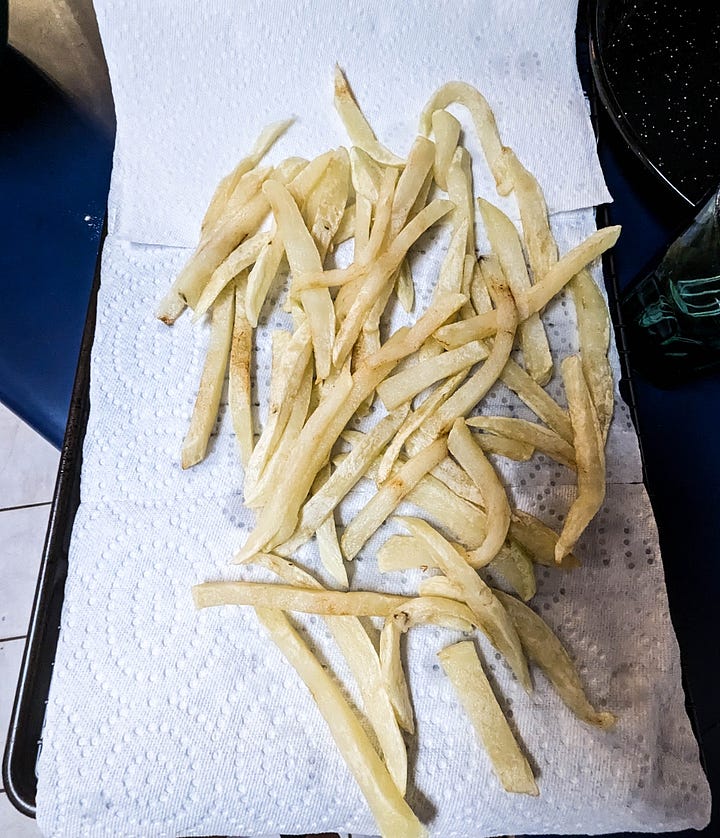
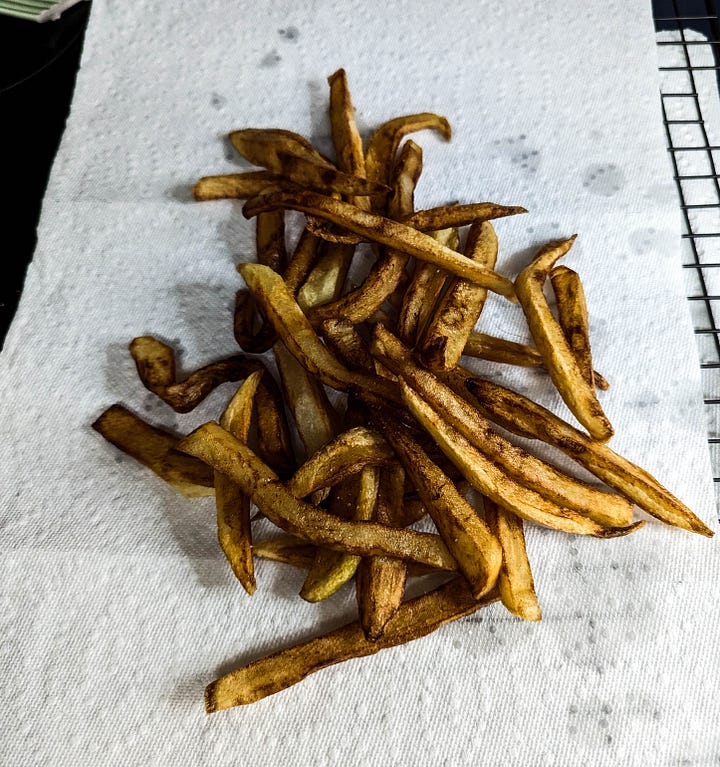
Now, I do recommend whipping up the gravy before you start frying, but I do want to note that I wasn't terribly impressed with my gravy recipe, and I'll talk more about that in the next section. Basically, I made a roux of butter and flour, added chicken and beef stock, then added a cornstarch slurry to help it thicken. I let mine fully cook, then kept it warm on the stove while I finished the fries.
Plating your poutine is a matter of personal choice, but I find that one of my favorite ways to go about the whole thing is to toss my fries in a ladle full of gravy first, then pop ‘em on the plate and cover with more gravy and the sweet, beautiful, delicious squeaky cheese curds. That way, you know every fry is coated. I know some folks who like to leave the curds cold, others who like them at room temperature, and still others who pop their poutine in the microwave for a few seconds to make sure the curds are nice and melty. I won't gatekeep your poutine assembly. Do what speaks to your soul.
I paired everything with a crémant wine, which is a type of sparkling wine made in the same style as Champagne. If you've never had a crémant, I highly recommend grabbing that as opposed to your usual prosecco or mass-market bubbly; there's so much more flavor, with the kind of bubbles that feel like a party in your mouth without being too overwhelming. Sparkling wines are also a great all-around match; it cuts through the heaviness of fried foods and thick gravies, and it also balances out the sweetness of the butter tarts without making the tarts seem too sweet or the wine seem too astringent.
So, What's the Verdict?
If you're 1) thinking about making this recipe and 2) are a big french fry fan, I highly recommend investing in a legitimate deep fryer. I found one online for $40, and let me tell you: It absolutely made this recipe. Mine is pretty small, but you I worked in batches with my fries to great success (and they were super easy to reheat in the oven, which revived their crispy-ness).
I think my biggest issue with this edition of GPG came in the form of my gravy! I followed the recipe exactly, then sampled the flavor as it cooked and found that there… really wasn't any. I doctored the concoction with Worcestershire sauce, Dijon mustard, freshly cracked pepper, and a formidable shitload of dried herbs, and that helped impart a nicer flavor. If you have a go-to gravy recipe that you love already, I recommend opting for that.
Otherwise, the poutine cooking process was so ridiculously simple that I couldn't believe I hadn't already been making this at home. The most time consuming part was letting the potato slices chill in cool water — after that, it was all pretty chill. I'm actually dying to find any and every excuse to use my fryer now.
As for my butter tarts, I was honestly pretty stoked with them. It was the first time I've ever made a pastry dough by hand, so I know I have a bit of work to do to make it fluffier, and I probably could have benefitted from cooking the tarts a little longer in the oven to make sure they had fully set. But all things considered, they were really freakin’ good.
I think the absolute best part of this specific meal was leaning that quite a few of these seemingly unobtainable or challenging skills were actually right within my wheelhouse. When I'm just hunting for things to cook for myself, I usually pass up anything that requires pastry or deep frying, since it seems like more effort than it's worth. It was awesome to know that I just needed the right tools to start working on those skills!
And to all the Canadians disappointed that I chose poutine: please don't be. I know it's a stereotypical food, but people love it for a reason. Poutine is the perfect blend of salty, crispy, chewy, and creamy. I was having one of the toughest weeks of my life when I made this dish, and knowing that I could end a long day with the meal equivalent of a warm hug on a plate did wonders for keeping the ol’ emotions regulated.
Let's Chat! Fucking Up And Finding Out
Of course, we need to celebrate all the fine folks who joined me in cooking paella for the Spanish GP! I really winged it with my recipe, so it was cool to see the way other people riffed on the same basic premise, too!
I want to give a special shoutout to Twitter user @NATEO13! We had a great chat in the thread about his first shot at cooking a GPG dish, and he mentioned that this project gave him an excuse to try something new and venture outside his culinary comfort zone. I honestly love hearing stuff like that, because that's a big reason why I wanted to start GPG for myself! I realized in the fall and winter of 2022 that, while I was getting a little more experimental in the kitchen, I was still making pretty similar styles of food or similar cuisines. There are only so many creamy chicken and mushroom dishes a girl can make before she realizes she needs a little variety.
I've kinda stumbled my way through a lot of these recipes, but I'm not perfect, and being perfect isn't the point. The whole goal is to just throw yourself into a meal and see what happens. Maybe you'll screw it up multiple times along the way. Maybe your hands will feel clumsy and your knife skills aren't great and you're still not really sure what “season to taste” should actually taste like. That's fine! None of that matters! The whole point is to try something new, figure out how to get to the end of it, and see how you did.
I'll be honest: I have mightily fucked up many recipes in my day, but I've never ended up with something totally unsalvageable. Your dish might just need more salt, a spritz of lemon, a drizzle of nice oil. It might also need to be buried in a really flavorful sauce or transformed into something totally different. But fucking up is arguably the most important part of anything — especially when you're new and willing to figure out why everything happened the way it did. I know my paella was good, but it wasn't anywhere near where I wanted it to be. Having cooked it, though, means I know that for sure, I know where I want to do better next time, and I know how to avoid similar pitfalls in other recipes I might make in the future.
If you're still new and a little intimidated by the “fuck up and find out” cooking method, I highly recommend reading Salt Fat Acid Heat by Samin Nosrat (and also watching the incredible Netflix series!). It's a cookbook at its most basic sense, but the goal is less to teach you how to make a recipe and more to teach you how to cook your way into something that tastes great to you. Nosrat guides you through experiments you can do in your own home that can be quite literally as simple as salting your pasta water in a different way.
I used to be one of those people who refused to deviate from a recipe because I believed that the author wrote it to be at its most perfect. After reading Salt Fat Acid Heat, I realized that the reason why some of those meals weren't satisfying was because it was missing something — and that “something” was more complex than just adding more salt. The book helped me understand how to use a recipe as a starting post, one that I can endlessly riff on. Once you start figuring out how to balance flavors, you start to realize how cool it is to adapt a recipe to your own tastes, featuring ingredients you can find at your grocery store, or including flavors that might be unconventional for the dish but that make sense for you.
If you've absolutely beefed it in the kitchen before, that's okay. In fact, that's good. It means you learned something, and that's the first step to improving.
(And, as always, I appreciate your cats taste testing each GPG dish. It warms my heart!!!)

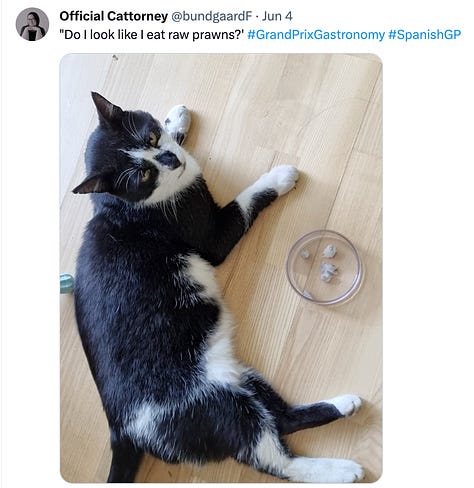


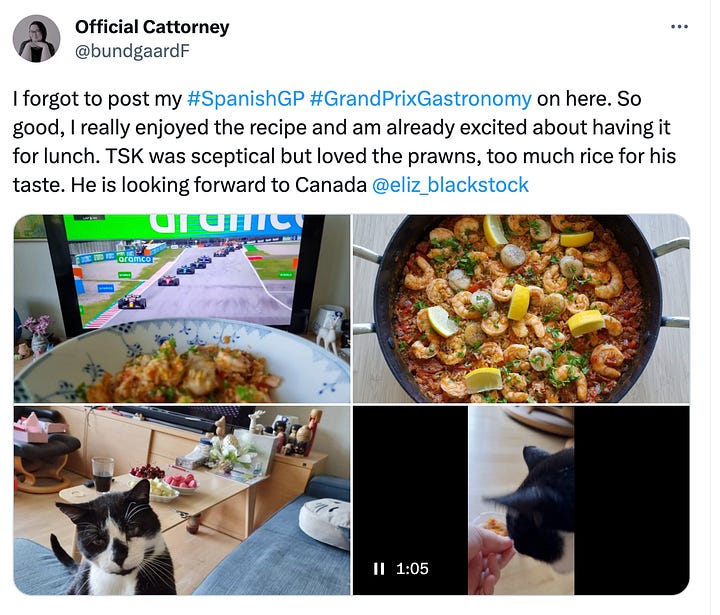
If you want to stay tuned…
Here are all the relevant links in one place, if you want to subscribe:
All Grand Prix Gastronomy-related content will be free — but if you want to drop me a donation on PayPal, that’s always welcome.





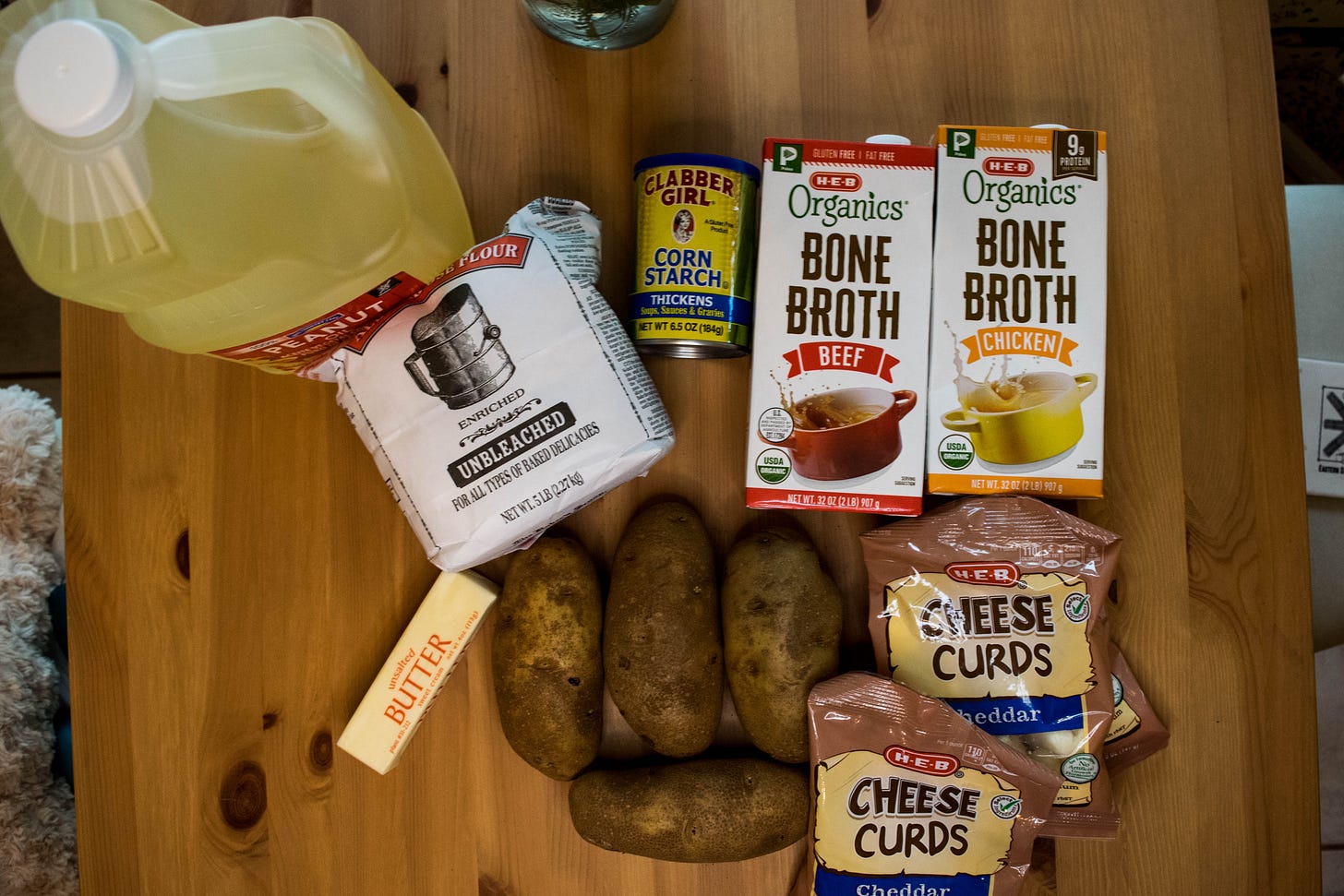

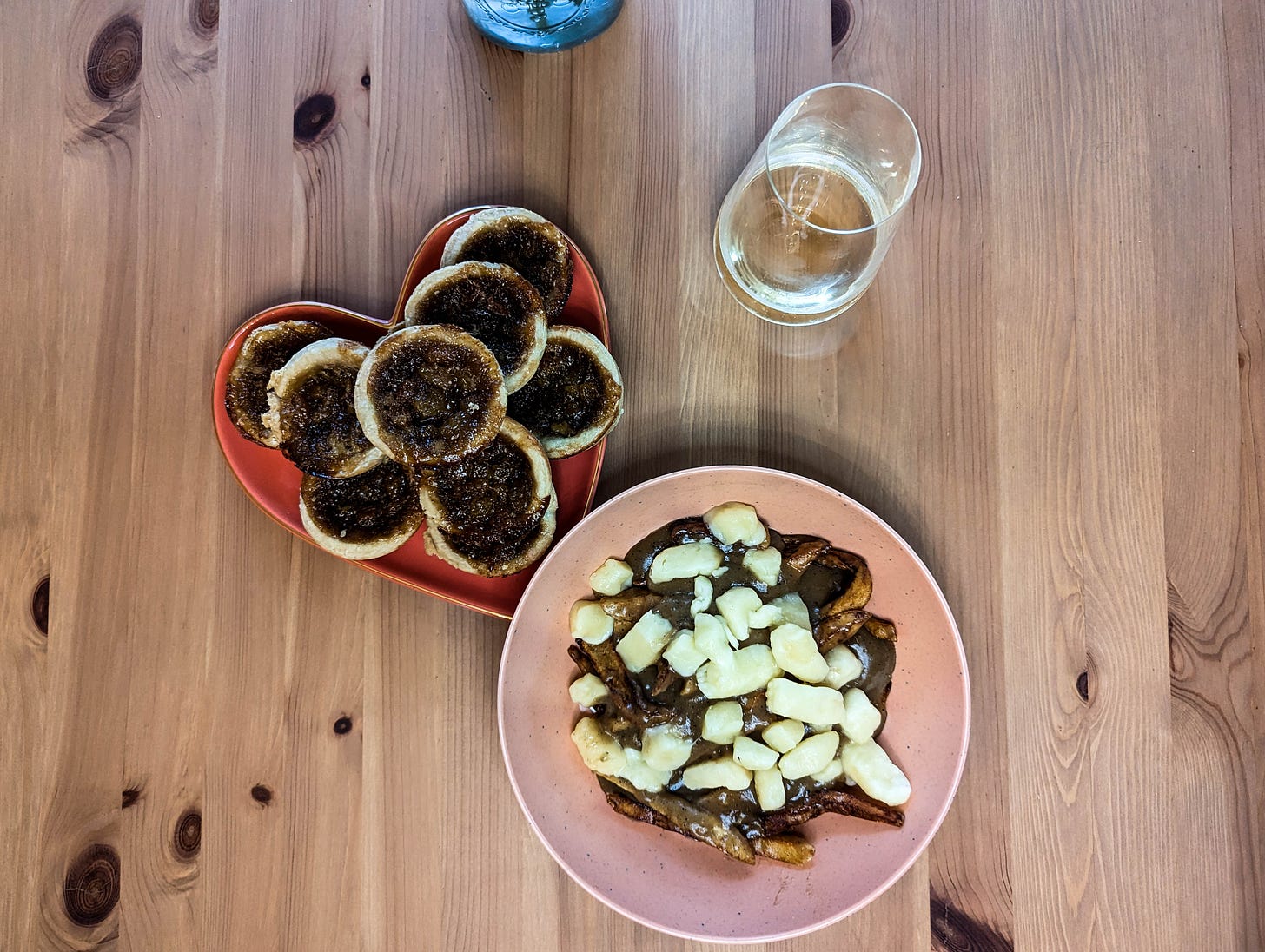
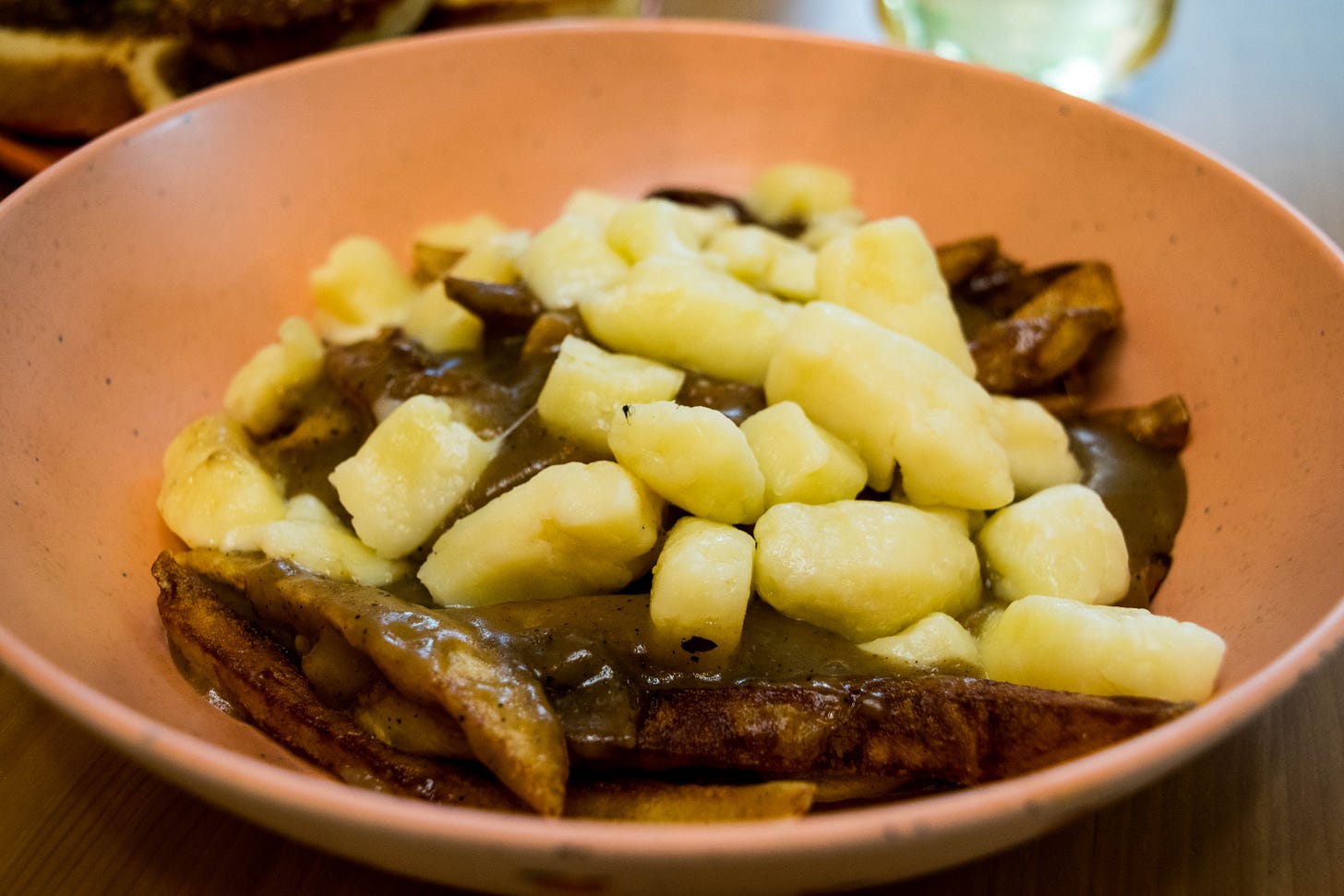
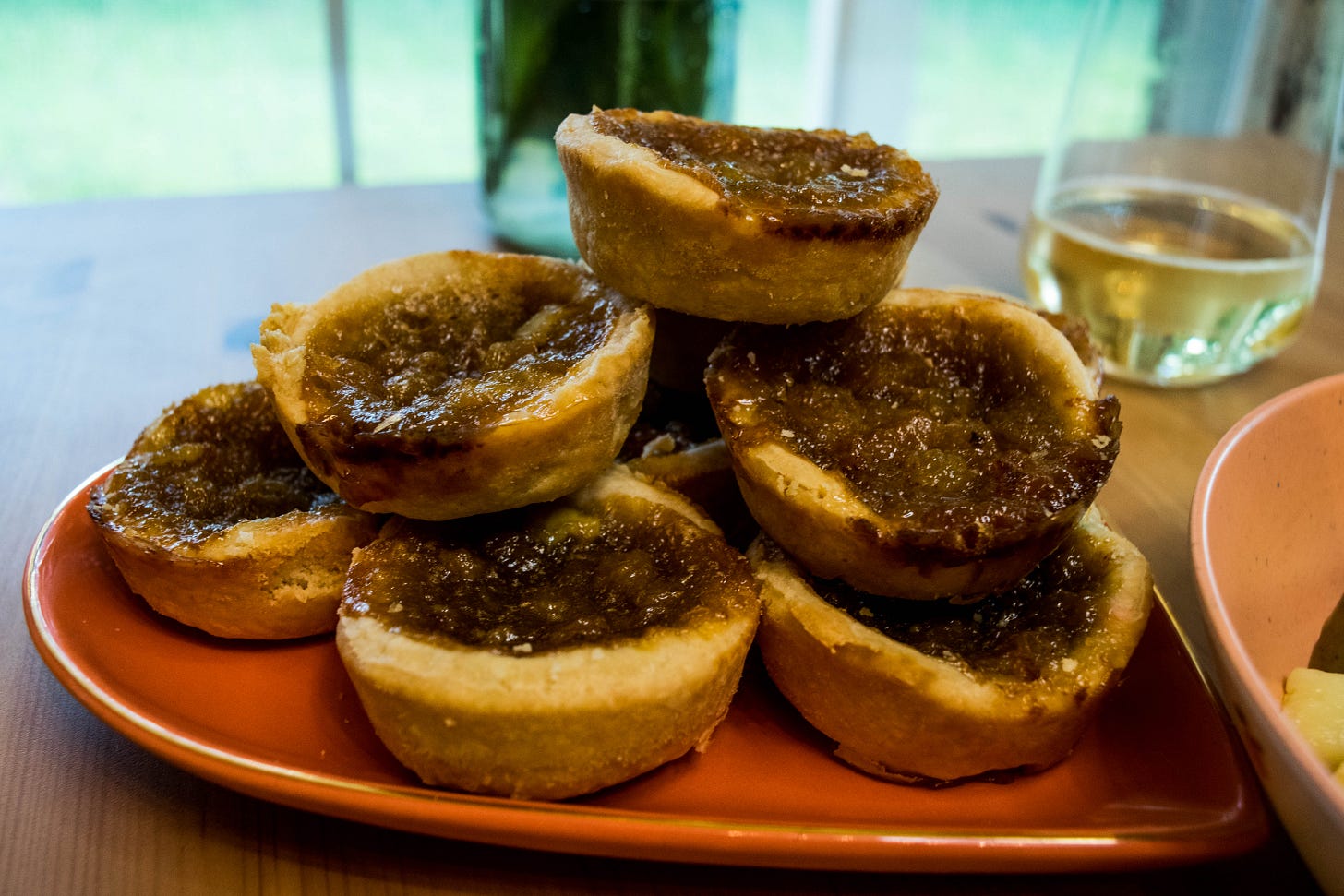
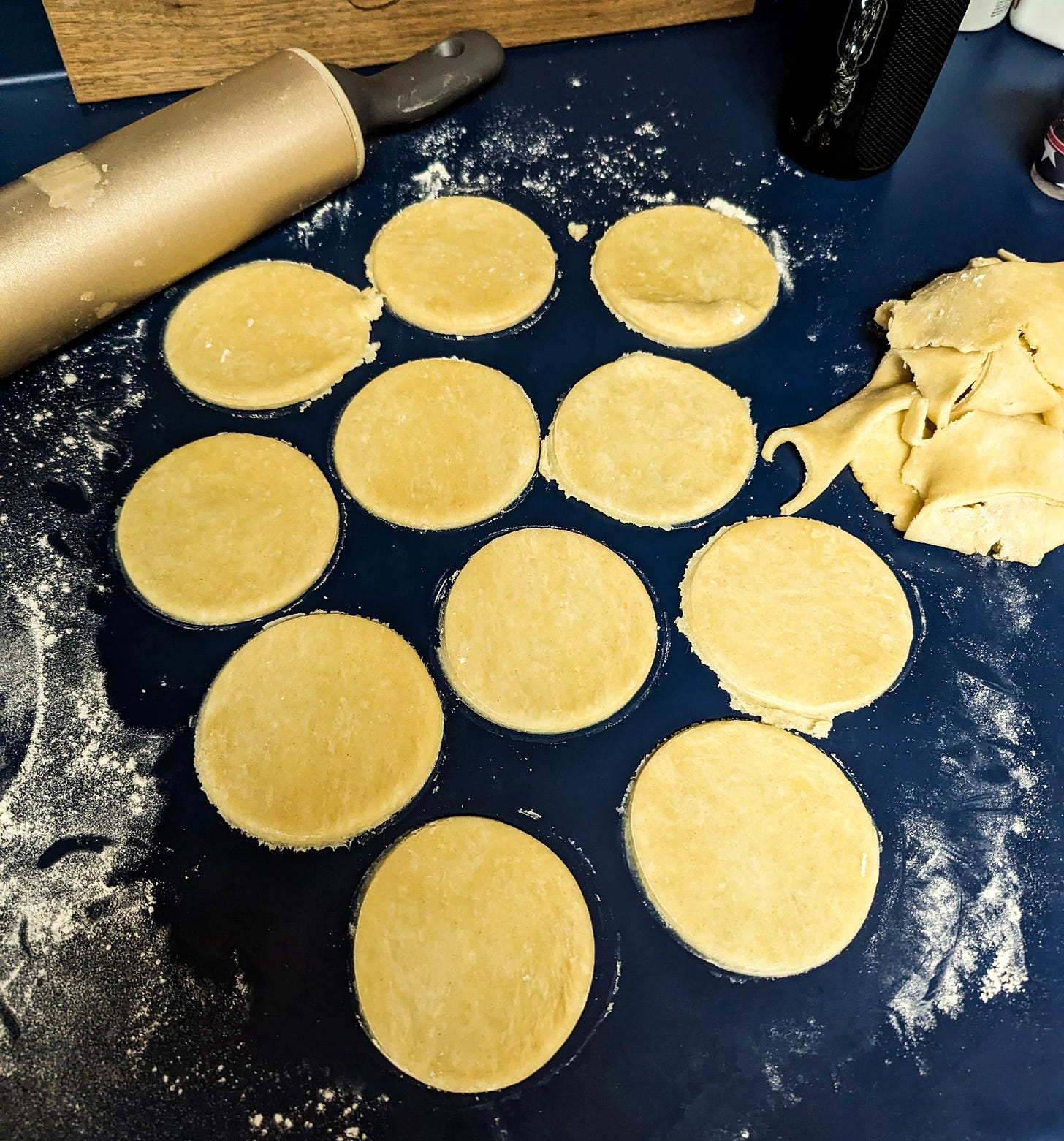
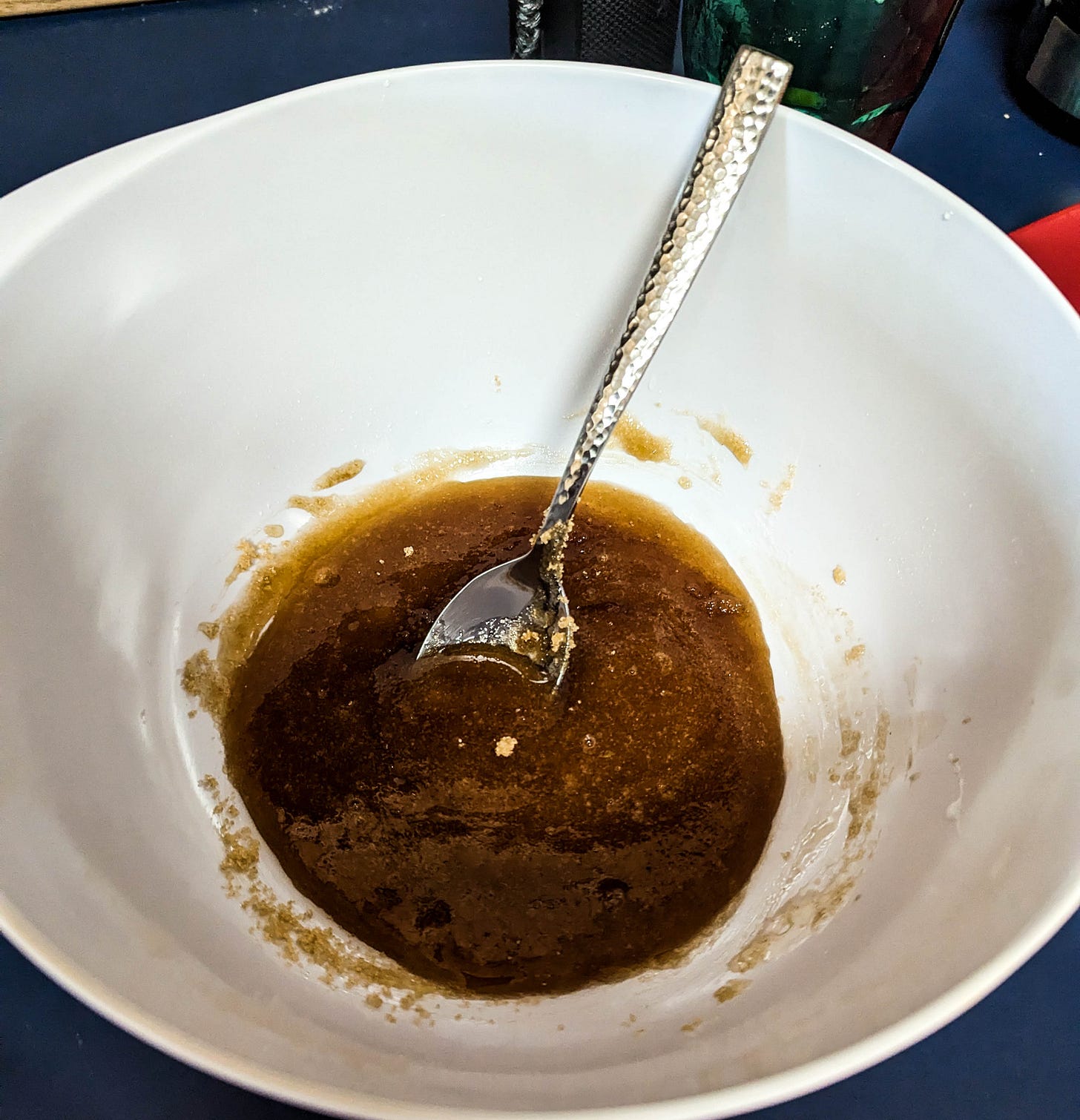

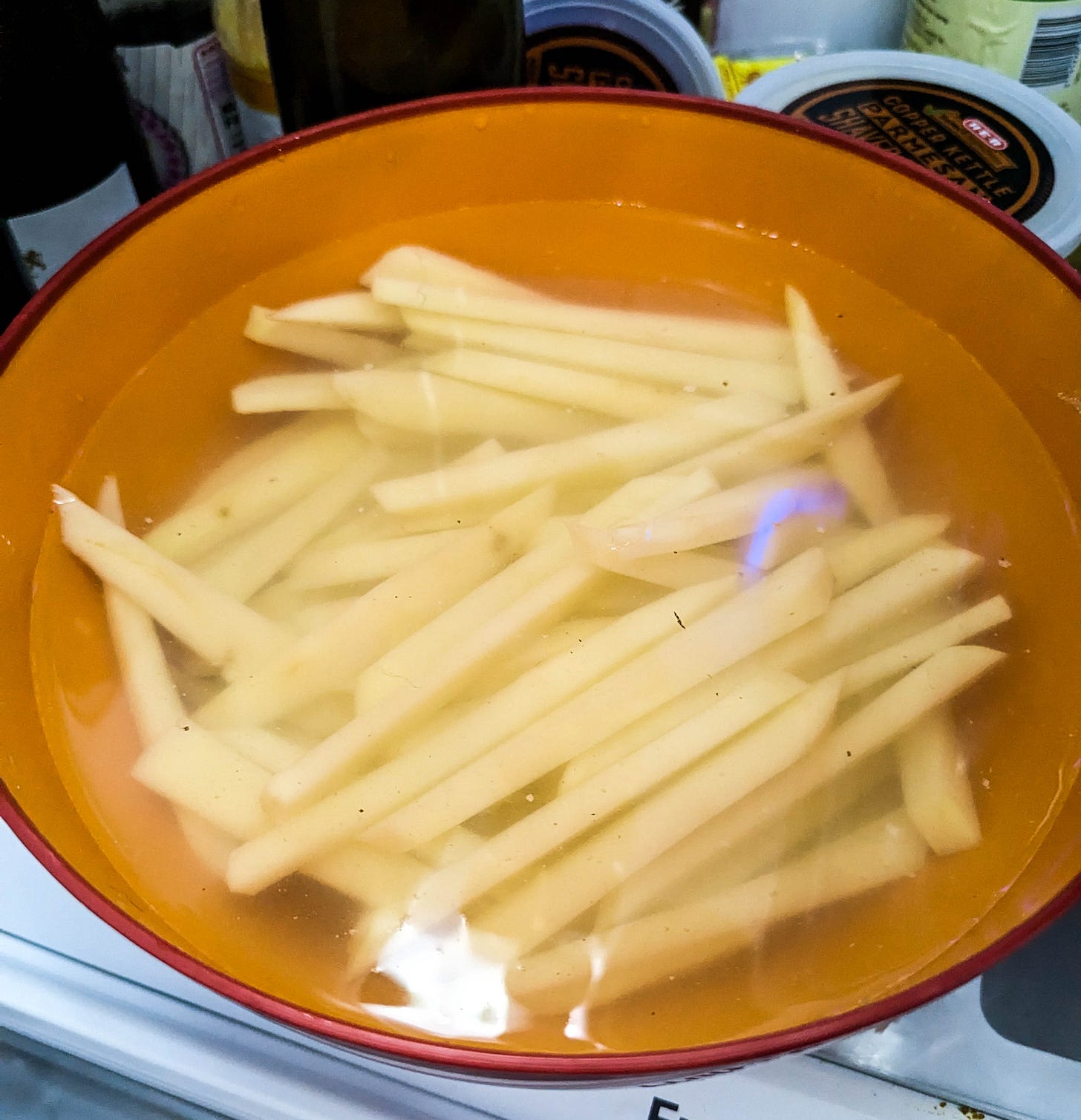
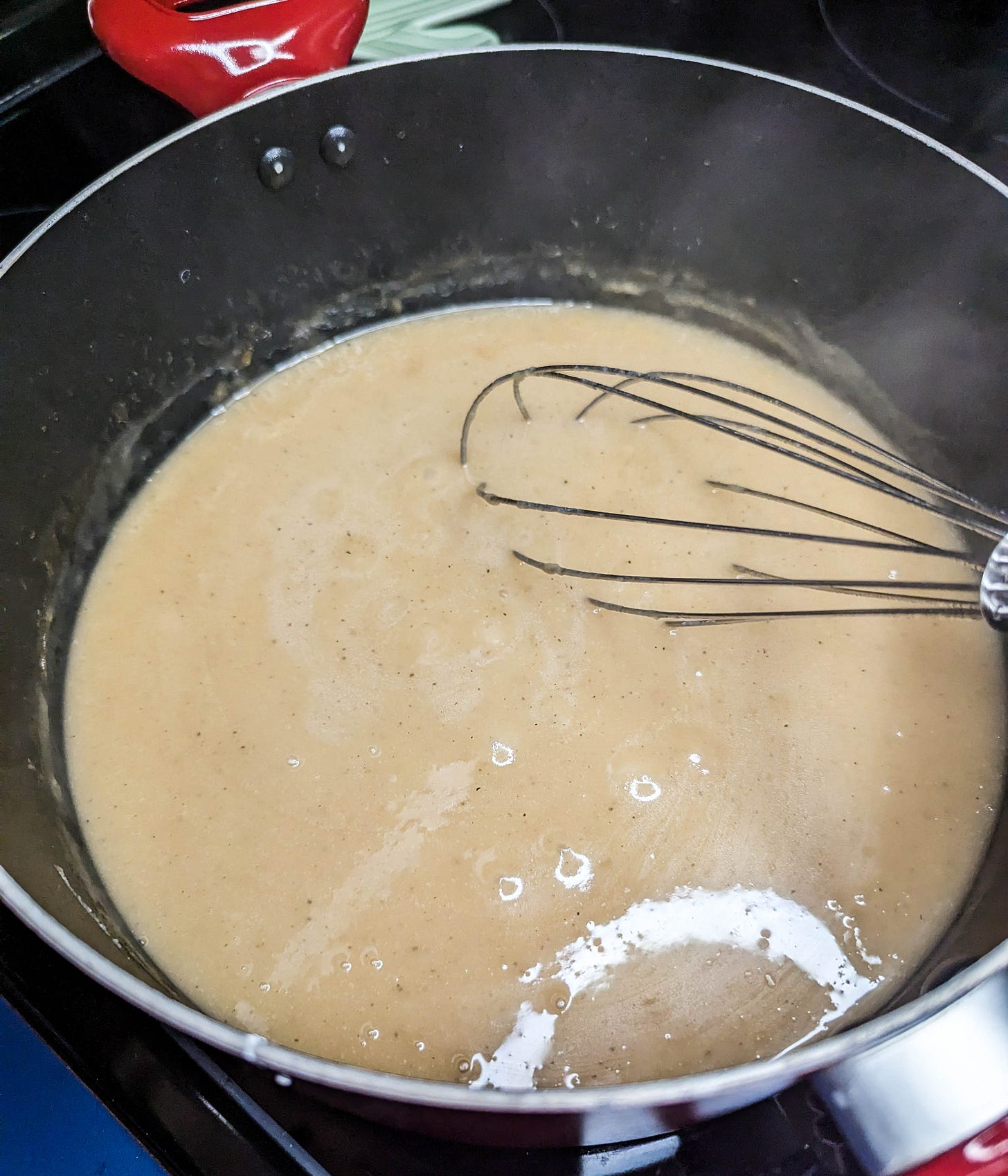

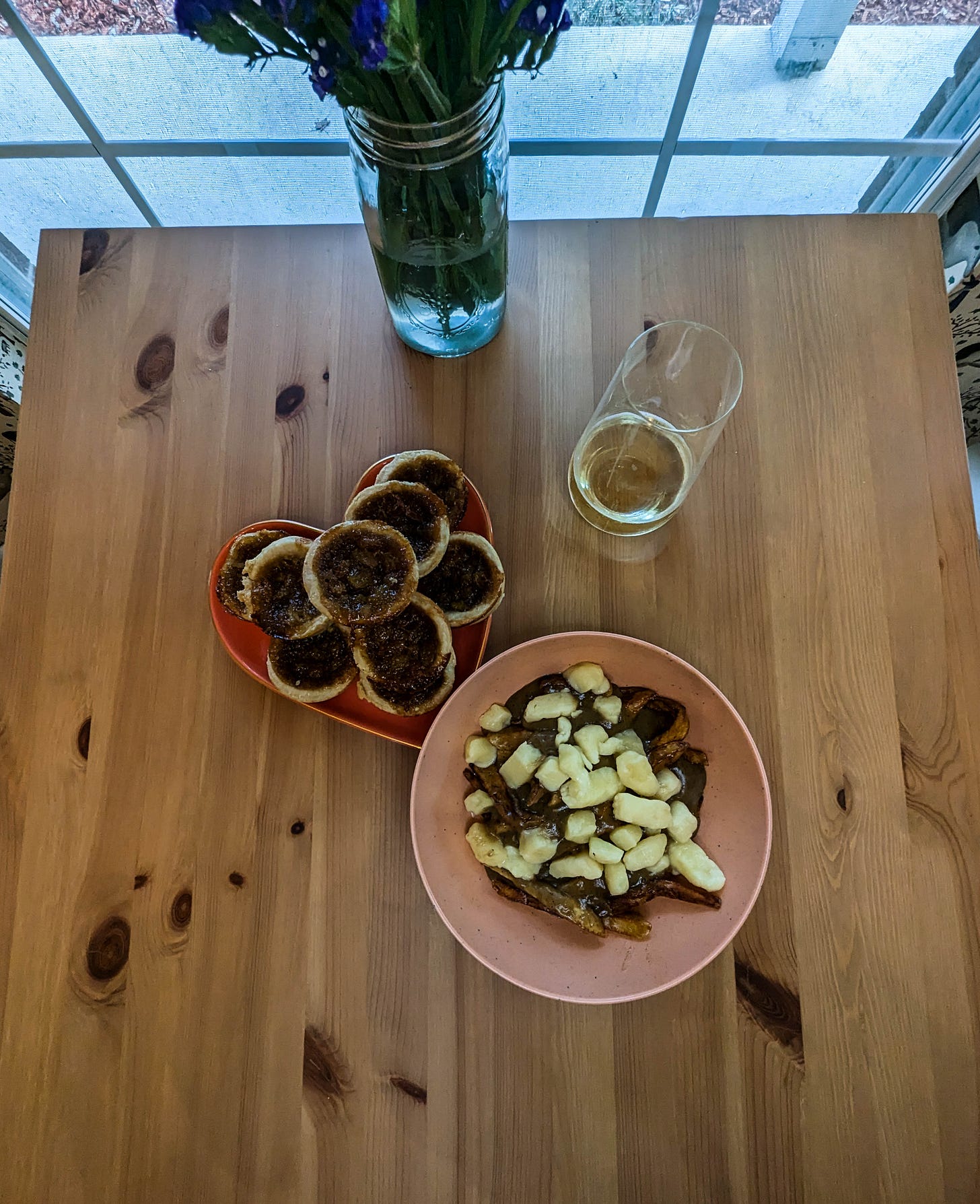

Awesome overview of poutine and it’s for sure a slog to go through all the prep for the fries (especially without a deep fryer)!! Have done it before and…yeahhhhhh
For anyone who wants to try this out in a method that’s almost faster than delivery: I cheat and slightly overcook my favourite frozen fries in the oven, toss on my favourite cheese curds (Coaticook), and mix up a powder packet of St-Hubert gravy from the grocery store (avail. on Amazon at a markup)—comes together in less than 30 minutes. ✌️